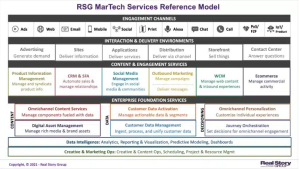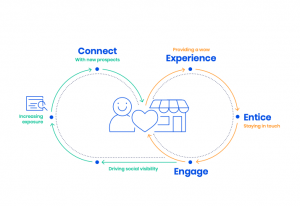
Understanding the wants and needs of hiring managers
This September, the Addison Group published a survey that illustrates the way today’s hiring managers evaluate candidate submittals. Interestingly, the results also cover a blended, multigenerational workforce that spans Boomers, Gen X and Millennials. Thomas Moran, Addison’s CEO, explained the motivation behind the study: “Trends in hiring manager preferences change over time, especially as the workforce is becoming more and more dominated by the Millennial generation. Today’s jobseekers need better resources, more accurate information and greater assistance when anticipating what hiring managers will value throughout the interviewing process if they want to land a job.”
The report, which uncovered the preferences of three generations of hiring managers, intended to assist candidates in preparing more effective resumes while honing their interviewing techniques. We believe that much of this information can also help MSPs better understand the drivers and mindsets of the hiring managers they’re serving.
In a recent article, we explored the friction that sometimes develops between client managers and MSP account teams. In a lot ways, the issues seem to arise from miscommunications and misunderstandings regarding roles and functional responsibilities. Armed with the results of the Addison Group’s report, MSPs may gain clearer insight to the desires of hiring managers and champion more productive relationships in the staff augmentation process.
Key findings
- According to the managers polled, the most important factors on resumes submitted for consideration were relevant work experience (54 percent), skills (51 percent) and proven performance (36 percent).
- The least persuasive factors included volunteer experience (38 percent), academic achievements and grades (40 percent), and schools attended (41 percent).
- The interview process itself is one of the most important considerations when determining a best-fit candidate, according to 74 percent of the hiring managers in the survey. Formalities such as follow-up thank you notes and cover letters scored much lower, at 19 percent and 18 percent respectively.
- An overwhelming majority of hiring managers (90 percent) immediately detected when resumes weren’t focused on role to be filled. Those mismatches weighed heavily in their determinations of the candidates submitted.
- And to further bolster the impact of employment brand and culture, 77 percent of the respondents pointed out that the reputation of an applicant’s previous employers played an instrumental role in determining the potential fit and qualifications of talent. In the same vein, strong interpersonal skills and demeanor ranked fairly high at 41 percent.
Specific, generational differences
Of course, with three generations of management represented in the research, the picture isn’t all that black and white. There are nuances that infuse each different age bracket.
- Boomers viewed proven results and references as more critical (61 percent and 30 percent respectively) than their millennial counterparts (44 percent and 21 percent respectively).
- For academic considerations, millennial hiring managers tended to depart from Boomers and Gen X colleagues as outliers. With younger managers, a candidate’s level of education, alma mater, and GPA seemed to matter more (27 percent, 13 percent, and 16 percent respectively).
- More than the other generational groups depicted, Boomers placed a significant emphasis on the actual interview over resume content and candidate references. Gen X managers, conversely, paid particular attention to a candidate’s resume (64 percent).
The most polarizing results, based on hiring manager age groups, came from the recruiting sources used to find exceptional talent. Not surprisingly, Millennials turned to social media more than their peers. As Addison Group EVP Steve Wolfe noted, “Millennials are making social media a legitimate recruiting tool. Across all generations, LinkedIn is the most trusted social media platform for candidate sourcing, used by 44 percent of managers. However, many millennial hiring managers use Facebook and Twitter as a recruiting tool, at 45 and 28 percent respectively, a trend that is expected to rise.”
The big takeaways
Streamlining processes
Hiring managers, like today’s young talent, prefer a streamlined recruiting process. Applications remain too convoluted, complex and repetitious. Job descriptions, modern talent feel, are not detailed, unique or specific enough to attract their attention. Contemporary workers prefer to have non-traditional and more captivating details in job descriptions. Savvy staffing professionals are eliminating the endless lists of skills, must-haves and qualifications in favor of telling compelling stories that speak to fit and brand: what talent will learn, what new skills they’ll acquire, the networks they can develop, what they’ll really be doing on the job, and what opportunities those experiences translate to in the future. More than that, they’re strengthening those connections by interacting with prospects, keeping applications simple and talking to them through their preferred channels.
Hiring managers, too, are prioritizing efficiency in the recruiting process. They’re focusing on credentials, accomplishments, cultural fit, potential and references. They want to ensure that the talent selected are individuals with the hard and soft skills, endorsements and output to fit the role and the team. When recruiting top talent, high performing MSPs and their staffing curators are concentrating on fit — sourcing workers based on matches to established skills and experience. And they are providing them with unique resources and tools to help facilitate and enhance the quality of their job searches, their integration to new business cultures and their careers.
Embracing the digital world
According to PWC’s “Millennials at Work” paper, 78 percent of today’s young professionals assert that access to the mobile, smart technologies they rely on in their personal lives makes them more productive and successful at work. Google, in a similar study, found that 66 percent spend the same amount of time or more watching online video content compared to television. Staffing industry innovators already understand these preferences and have created solutions that solidify these connections. Now, according to the Addison Group’s report, hiring managers, regardless of generation, are also beginning to embrace technology as a means to optimize hiring. That includes more acceptance of social recruiting, video interviewing and mobile apps.
More MSPs and staffing curators are using video interviewing platforms, supplemented by digital communications to maintain critical interpersonal dialog. Video conferencing systems such as Skype, Google Hangouts, FaceTime and others have replaced phones, yet offer a more intimate experience. Online learning applications are being used to facilitate and enhance onboarding, web-based training, continuing skills development and flexible work arrangements.
Today’s staffing curators and MSPs are already on the leading edge of these developments and have implemented virtual learning models that allow workers to review training materials on their own time through online programs, while still having access to personal communications with peers and staffing professionals.
People matter
In the end, the Addison Group concludes, the interview process has become essential. We believe that sends a positive and encouraging message: despite the mounting presence of machines and automation, people realize that talent matters.
As Steve Wolfe observes, interviews provide hiring managers with “an opportunity to get perspective on a candidate beyond their carefully curated personal and professional information featured in their resume and social media profiles. Ultimately, the interview lets the hiring manager get an authentic view of the candidate to identify whether or not they fit the company culture and position.”
Elite staffing professionals are deeply entrenched in all applicant tracking platforms, from traditional job boards to social media and online marketplaces. Through these systems and their efforts to build virtual benches of passive candidates, staffing professionals develop robust networks of the best talent for the MSPs and clients they support. This creates the opportunity to speedily source and place highly qualified workers, along with the ability to carefully find the best fit environments for their talent — an additional benefit to MSPs and clients in terms of reducing attrition and maximizing productivity.
More importantly, they are 100-percent committed to the processes of sourcing and recruiting. They can commit to making the interpersonal connections that have become paramount to engaging the best talent. Staffing curators spend less time scouring job boards and letting automated systems generate boilerplate notifications. They directly converse with the talent they’re prospecting. They send personalized emails, custom offer letters and provide ongoing, continuous feedback through social networks, texts, phone calls and more. They confer with talent to uncover their aspirations, motivations, roadblocks and success factors. They sell opportunities and potential, not merely compensation. In short, they connect with today’s young professionals on a meaningful and human level.
An alignment of values
Even in this candidate-driven market, or perhaps because of it, we’re beginning to witness a welcome alignment of values between what hiring managers and talent want. MSPs and their staffing curators have already advanced many of the approaches and techniques we’ve covered in this post. Yet, the Addison Group’s study helps shine a brighter light on the concrete wants and needs of hiring managers. Using this data, along with their already proven methods, MSPs could find themselves better positioned to align themselves with hiring managers at the beginning of the engagement and forge a faster, closer relationship to achieve successes together.
Business & Finance Articles on Business 2 Community(62)
Report Post








